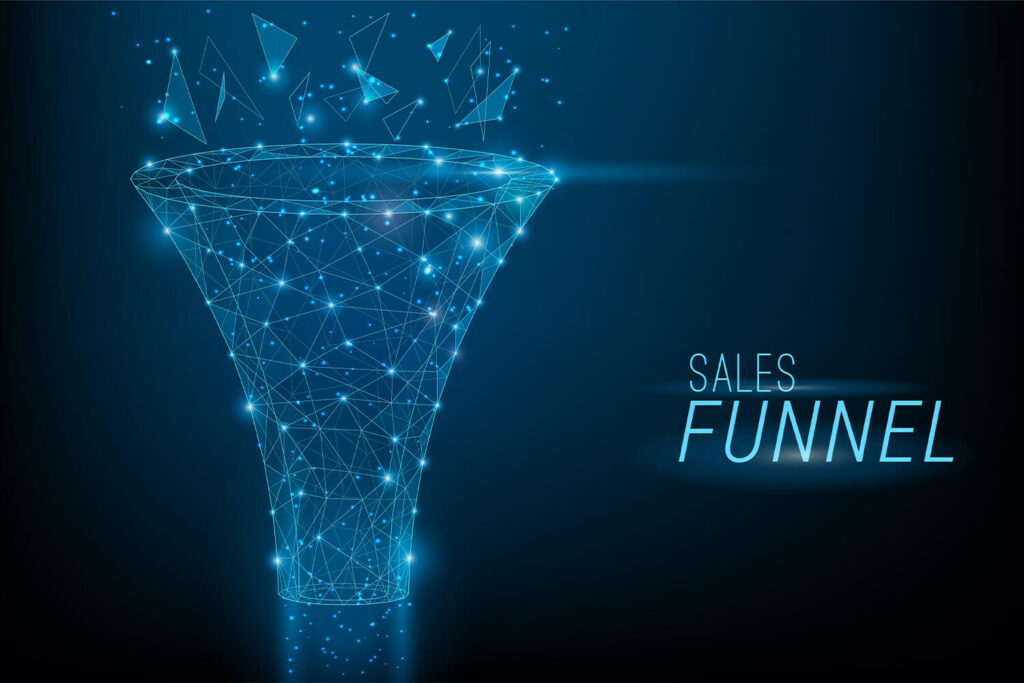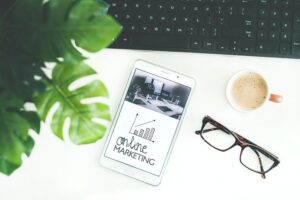If you’re having trouble earning and converting leads, then you likely need to work on your sales funnel. If you don’t yet have a sales funnel, you need to develop one as soon as possible.
Here’s everything you need to know about sales funnels and how to make your own to grow your business:
What Is a Sales Funnel?
A sales funnel or sales pipeline describes potential customers’ journey when deciding to purchase a product from a company. This visual representation of this sales process depicts a large funnel opening of potential customers that then get narrowed down to a smaller group that actually converts.
A sales funnel takes into account the decisions and thought processes of customers when making a purchase. It recognizes the fact that customers very rarely make impulse purchases with no thought or research. For this reason, understanding the sales funnel and customer journey is key to meeting the needs of your customers and boosting your conversion rate as a result.
What Are the Different Stages of a Sales Funnel?
A sales funnel consists of four different components or stages: awareness, interest, desire, and action. These stages can be easily remembered with the acronym “AIDA.” Let’s dive into these different sales funnel stages and how you can incorporate the stages of the sales funnel into your own marketing strategies:
1. Awareness
The first part of your sales funnel is awareness — wherein a prospect becomes aware of your products, services, or overall brand for the first time. Potential customers can become aware of your brand through paid advertising like a Facebook ad, social media, a blog post, personal recommendations, or a Google search. This brand awareness stage is extremely important because if people don’t know about your products, they obviously can’t purchase them.
2. Interest
Once potential customers are aware of your products, they need to be interested in them to move through this marketing funnel. To create an effective sales funnel, make sure to communicate what problem your products are solving to your target audience.
Also, make sure to communicate why your products are better than the competition. These components can be communicated through branded content such as YouTube videos produced to inform and educate your potential customer base without being too pushy.
3. Desire
Now that a potential customer is generally interested in your product, they now need to desire it. Essentially, you need them to go from “like” to “want” in this stage of the buying process.
But how do you do this? The best way to stimulate desire is to present them with specialized content and personalized offers. For instance, have them subscribe to your email list to learn more about your product offerings in exchange for a discount that drives them to make a purchase.
4. Action
Finally, the last stage in a sales funnel is action — when they pull the trigger and are no longer a “potential” customer but an actual paying customer. However, the work keeps going to retain them as paying customers.
Make sure to court customer loyalty and keep them engaged with your company through email lists, SMS lists, newsletters, and special offers like free shipping or a bonus product with purchase. Reach out for feedback on their transaction and make them feel valued.
How Does a Sales Funnel Work?
There are three levels of a sales funnel: the top of the funnel, the middle of the funnel, and the bottom.
The top of the funnel consists of marketing efforts that bring customers to your business, including advertising efforts and your business website.
The middle of the funnel consists of sales efforts prior to the sale, including conducting research and trying samples.
The bottom of the funnel consists of the final purchase wherein customers complete and pay for the purchase — either online or in person.
What Are the Different Types of Sales Funnel Strategies?
While sales funnels may seem like monolithic concepts, there are actually several different strategies for your sales teams to choose from based on your business goals and needs. Here are some examples of sales funnel strategies for you to consider when building your own funnel:
- Membership funnel: This funnel is ideal for many types of products and services. Simply offer customers a free trial to your membership wherein they will receive sample products or free services for a limited amount of time before being upgraded to a paying member. When done right, they will be impressed by their free trial and will feel comfortable converting.
- Survey funnel: This funnel helps you narrow down your often wide initial customer base by asking questions. For instance, you could ask about age, gender, product interests, etc., before directing them to relevant pages and products. Not only is this funnel more engaging for customers, but it’s more informative for you as a business.
- Squeeze page funnel: This funnel helps generate potential leads by “squeezing” potential customers with an interesting question or offer. To answer the question or earn the offer, the person has to enter their email address. Make sure to set up a dedicated squeeze page with little to no branding or distractions to boost the effectiveness of the page.
- Reverse squeeze page funnel: If the squeeze funnel isn’t really your style, there’s also the reverse squeeze page funnel wherein you provide a potential with information or access before asking them to opt-in — rather than requiring them to opt-in to receive anything. This can help your brand build trust and rapport with potential customers.
How to Develop a Winning Sales Funnel?
With these strategies and examples in mind, it’s now time to develop your own winning sales funnel. Here’s what you need to do:
- Develop your landing pages. Sales funnels require specialized landing pages that provide potential customers with the information they need to move towards the next stage in the funnel — and landing pages do just that.
Develop different landing pages for customers to be directed to after clicking on an ad, signing up for a webinar, or downloading a report. Make sure that your landing pages are simple, straightforward, and informative. Also, make sure that you can easily capture their information with a form. - Make an offer. To incentivize potential customers to provide you with their valuable information, you should make them an offer. For instance, you can offer them a free sample, a discount coupon, or a free report.
- Nurture your leads. From there, you need to nurture your leads to go from the awareness stage into the interest stage of the funnel. Contact them frequently with relevant information and offers about your business and products.
- Make a nudge. Nudge potential customers from the interest stage to the decision stage by providing them with special offers and products.
- Gather feedback. Whether or not the customer actually converts, you need to gather feedback to determine what works in your funnel and what doesn’t. This will provide insights and analytics to improve customer retention rates for the future.
Wrap Up on Sales Funnels
As you can see, there’s no single approach to sales funnels as they differ from brand to brand. Ultimately, predicting your target customers’ behavior throughout your funnel will help turn website visitors into paying customers for years to come.
So if you’re having trouble coming up with a funnel that works for your brand, feel free to reach out to Greg Gillman for personalized guidance, resources, and feedback.
Greg Gillman works with D2C brands to boost awareness and conversions. He has helped brands like Petco, Ring, Theragun, and Adidas — and he can help you too.
Sources:
What Is a Sales Funnel? | Fit Small Business
Why the Old AIDA Marketing Model Is Not Dead, But More Alive Than Ever. | LinkedIn


